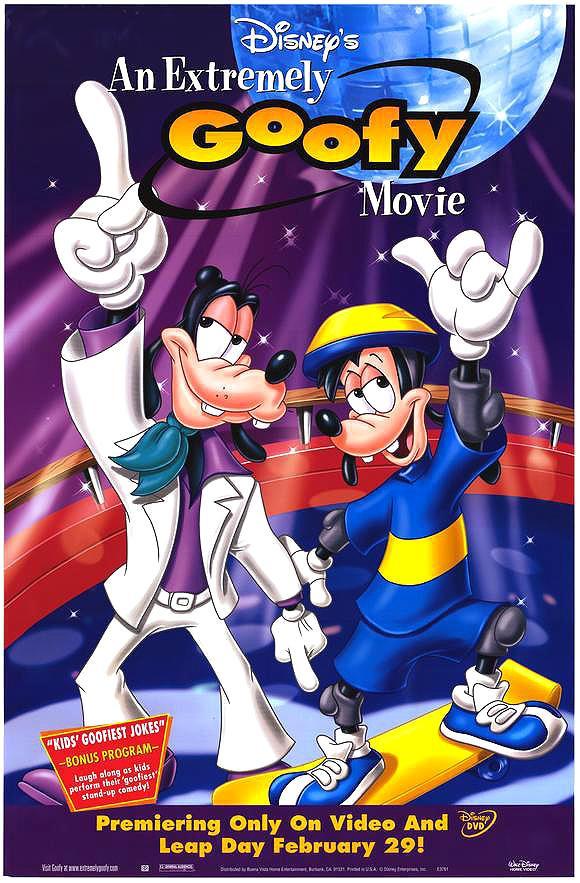Things That Will Die Off With Boomers

For many Baby Boomers, landline phones remain a nostalgic connection to a simpler time. These devices, once a staple of every household, symbolize reliability and permanence. However, the rapid rise of mobile technology and internet-based communication has rendered landlines nearly obsolete. Younger generations, valuing mobility and convenience, have little attachment to this aging invention.
The decline of landline phones is inevitable as the Boomer generation dwindles. Without younger consumers sustaining demand, the traditional landline will soon become a relic of the past. While it once revolutionized communication, the landline's inability to adapt to modern lifestyles ensures its place as a historical artifact, not a practical tool.

Checkbooks, once a staple of personal finance, are quickly fading into obscurity in the face of digital payment solutions. Younger generations, accustomed to the convenience and speed of electronic transactions, rarely encounter the need to write a check. Meanwhile, online banking, mobile payment apps, and credit cards offer streamlined alternatives that leave checkbooks feeling outdated and cumbersome.
Writing checks for groceries or bills, once a common practice, is now seen as an inefficient and time-consuming task. As the reliance on digital technology continues to grow, the checkbook is following a trajectory similar to that of the landline phone—destined to become a historical artifact rather than an active tool in modern life.

The era of cable TV is steadily fading as streaming services continue to revolutionize how people consume entertainment. Platforms like Netflix, Hulu, and Disney+ offer on-demand content, tailored recommendations, and the convenience of viewing across multiple devices. This flexibility makes traditional cable plans, with their rigid schedules and limited options, seem antiquated by comparison.
Additionally, streaming services often come at a fraction of the cost of cable subscriptions, making them an attractive choice for budget-conscious consumers. With exclusive content and ad-free viewing as a standard for many platforms, the appeal of cable TV wanes further.

The formal dining room, a staple of 18th and 19th-century households, is steadily disappearing in modern home design. This once-essential space, reserved for special occasions, is being replaced by open-concept layouts that prioritize functionality and everyday utility. Millennials and Gen Z homebuyers, who favor flexibility, often view the formal dining room as an impractical use of space.
Rooted in traditions upheld by Baby Boomers and earlier generations, the separate dining room now feels like an outdated relic. Modern lifestyles, marked by casual dining habits and smaller homes, rarely accommodate such rooms. As Boomers downsize, the formal dining room is likely to vanish, surviving only in nostalgic memories and vintage floor plans.

Collectible plates and figurines, such as Hummel figurines or commemorative plates, are losing their allure among younger generations. Once celebrated as prized heirlooms and symbols of nostalgia, these items now struggle to find relevance in a minimalist era. Millennials and Gen Z, who generally prioritize functionality and clutter-free living, often view such collectibles as unneeded trinkets that take up valuable space.
Rooted in a time when decorative displays were a popular way to personalize one’s home, these pieces are now more likely to be found at estate sales or thrift stores than on modern shelves. Collectible plates and figurines are fading into obscurity, cherished mainly by older generations who hold sentimental attachments to these delicate keepsakes.

Paper maps, once an essential travel companion, have become a rare sight in today’s digital landscape. GPS devices and apps like Google Maps have replaced the need to unfold and study pages of cartographic detail. The convenience of real-time updates and turn-by-turn directions has rendered traditional maps impractical for most modern travelers.
Despite their decline, paper maps hold a nostalgic charm and offer a tactile connection to geography. They do not require batteries or an internet connection, making them reliable in remote areas where technology might fail. Despite their reliability, modern technology has made paper maps a relic.

The rise of e-commerce has significantly impacted traditional department stores, diminishing their relevance in an era dominated by online shopping. Consumers increasingly favor the convenience of digital platforms, which offer broader selections, competitive pricing, and fast delivery options. Consequently, many iconic department store chains have struggled to adapt and remain profitable.
Yet, department stores still hold appeal by providing experiential shopping with curated products and personalized service. To compete, many are adopting hybrid models, integrating online and in-store experiences. However, without substantial innovation and consumer engagement, their place in the retail landscape continues to waver amidst this digital transformation.

Golf has long been a global symbol of prestige and exclusivity, often associated with business networking and leisure for the elite. Yet, its cultural significance may diminish as younger generations explore more affordable and accessible sports. With baby boomers—golf’s most loyal demographic—aging, clubs are witnessing a shift in participation trends.
Efforts to modernize the game, such as shorter formats or technology-integrated courses, aim to attract younger players. However, maintaining its position as a status symbol requires a balance between tradition and innovation, ensuring the sport stays relevant and appealing in an evolving social and cultural landscape.

The obsession with perfectly manicured lawns, once a hallmark of suburban pride, is fading as environmental awareness grows. Younger generations are increasingly opting for eco-friendly landscaping alternatives, such as native plants, wildflower meadows, and vegetable gardens. This shift reflects a broader departure from labor-intensive lawn care tied to baby boomer aesthetics.
With climate concerns escalating, water usage and chemical fertilizers associated with traditional lawns are under scrutiny. The pristine green lawn is no longer a universal status symbol, as new generations prioritize sustainability over appearance. This cultural pivot signals the gradual decline of the meticulous lawn care trend alongside aging boomers.

Fine china sets, meticulously reserved for special occasions, are becoming relics of the past. Younger households are gravitating toward everyday, versatile dinnerware that better suits their casual lifestyles. With dining traditions shifting, the use of heirloom china now feels out of place and impractical for many.
Millennials and Gen Z tend to value experiences over material possessions, leaving china cabinets to gather dust. The fading emphasis on formal dining and entertaining has made elaborate china sets a vestige of the baby boomer era, poised to disappear with their declining prominence in family traditions.

Casual dining chains like Applebee’s face an uncertain future as consumer preferences evolve. Millennials and Gen Z increasingly favor local, unique eateries that offer curated menus and authentic experiences over the standardized options of chain restaurants. This shift reflects a broader desire for individuality and connection, which large franchises often struggle to replicate.
The decline of Boomers, who are the primary patrons of casual dining chains, further challenges their survival. These restaurants thrived during an era when convenience and predictability were valued, but younger generations view them as outdated and uninspiring. Without significant adaptation, chains like Applebee’s and Chili’s risk becoming relics of a bygone dining culture.

Door-to-door sales were once a staple of commerce, especially during the Baby Boomer era. Salespeople would visit neighborhoods selling everything from vacuums to encyclopedias. However, this practice has nearly vanished, as digital storefronts and online shopping have rendered it obsolete. With Boomers aging, the personal, face-to-face sales method will soon fade entirely.
Not to mention, it can be considered unsafe today. Back then, many parents would let their children run along the streets with no care in the world. It wasn’t until the late 1970s and ‘80s that “stranger danger” was constructed for children’s safety. Now, many view such concepts, such as door-to-door sales, as widely dangerous and risky for anyone’s well-being.

The meticulous practice of ironing every piece of clothing is also fading as casual dress norms dominate modern society. Boomers saw neatly pressed outfits as a sign of respect and professionalism, but millennials and Gen Z often prioritize comfort and practicality. With a shift toward relaxed fashion trends, this routine is unlikely to survive beyond the Boomer generation.
Sometimes you don’t have the time to get out an ironing board, plug in the iron, wait for it to heat up, and then proceed to iron a piece of clothing. Time can sneak up on you, and then you just have to put on some clothes, regardless of wrinkles, and head out the door. Ironing can be time-consuming, and with today’s laid-back, carefree fashion, it’s a practice not many care to implement.

TV shopping channels like QVC, once a groundbreaking retail innovation, are now grappling with dwindling relevance in the digital age. With online shopping offering greater convenience, variety, and competitive pricing, these channels fail to capture the attention of younger, tech-savvy shoppers. As Boomers age, their loyal viewership diminishes, signaling an inevitable decline for such platforms.
TV also isn’t nearly as popular as it once was. In the height of television’s demand, TV shopping was also seeing increased sales and views. But today it is a different story. With streaming services growing more and more each day, TV shopping channels simply don’t serve the public anymore and gain little to no traction.

Elvis Presley memorabilia, once revered as symbols of a rock-and-roll revolution, faces a cultural fade with each passing generation. While still cherished by Boomers who grew up during his reign, younger audiences often lack a personal connection to his legacy. Without similar reverence, interest in Elvis collectibles steadily declines.
This is when younger folks will hear a Boomer talk about Elvis and then say, “Who’s that?” The times are changing, and music symbols are changing with it. Today's music is much different compared to the years of the Boomers, and they probably despise the music of today. But when Millennials and Gen Z are starting to overwhelm all realms of media, concepts that were popular for Boomers, such as Elvis memorabilia, are going to go out with them.

The traditional 9-to-5 workday is rapidly losing its appeal among younger generations who value flexibility and work-life balance. They are challenging the outdated notion that productivity is tied to rigid schedules, advocating instead for remote work, compressed workweeks, and asynchronous hours. These alternatives often result in more efficient work while supporting personal fulfillment.
Younger employees prioritize results over hours clocked, pushing organizations to evolve. This generational shift signals the gradual decline of the conventional workday, aligning labor practices with modern lifestyles and technological advancements to create a future focused on flexibility.

The authoritative "because I said so" approach to parenting is steadily fading into history as modern trends emphasize open communication and mutual trust. Younger generations of parents are adopting methods that encourage dialogue and understanding. This evolution in parenting reflects a broader cultural shift toward fostering emotional intelligence and collaboration in families.
With the retirement of Baby Boomers, the generation most associated with traditional parenting norms, the demand for more empathetic and adaptive practices has grown. Parents today are more likely to question rigid methods, opting instead for styles that promote critical thinking and respect.

Fax machines, once a crucial tool in offices, are rapidly becoming relics of a bygone era. With the rise of email, cloud storage, and other digital communication tools, the need for this outdated technology has diminished significantly. Companies are streamlining workflows, leaving fax machines to gather dust in forgotten corners.
While older professionals may have relied heavily on fax machines during their careers, the younger workforce sees them as inefficient and unnecessary. As Baby Boomers retire, fax machines are likely to vanish entirely, replaced by faster, more versatile technologies that align with the demands of modern businesses.

Encyclopedias were once a staple in homes and libraries, serving as treasured sources of knowledge for generations. These extensive, physical volumes offered concise overviews on nearly every subject, but their dominance has waned in the internet age. With the rise of Wikipedia and other digital information platforms, the need for bulky, expensive encyclopedia sets has disappeared.
Younger generations, accustomed to instant online access, find physical encyclopedias cumbersome and outdated. As Baby Boomers fade into the background, their once-revered spot on bookshelves is likely to vanish, leaving digital solutions to fully encapsulate the future of knowledge.

Bar soap, once a hallmark of personal hygiene routines, is steadily falling out of favor among younger individuals who prefer the convenience of body washes and liquid soaps. These modern alternatives offer more variety in scents, easier application, and often appeal to eco-conscious consumers through refillable packaging.
Conversely, bar soap is often seen as less hygienic due to its shared use and residue buildup. With Baby Boomers comprising the majority of bar soap loyalists, this traditional product is on the decline. Without strong nostalgia from newer generations to sustain it, bar soap may eventually become a relic of the past.
From the timeless classics to today’s trends, we love all things pop culture here at Alot Living! Movies, TV, music, fashion—we’ve got a little something for everyone. Whether you want to take a walk down memory lane or explore the next big thing, we’re ready to help you do it all and much more at Alot Living!












